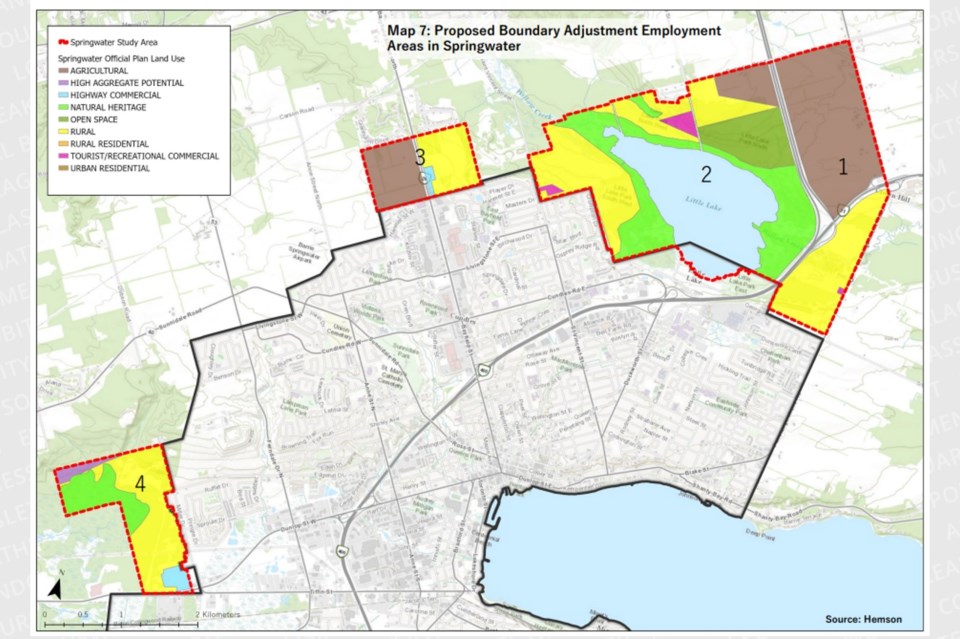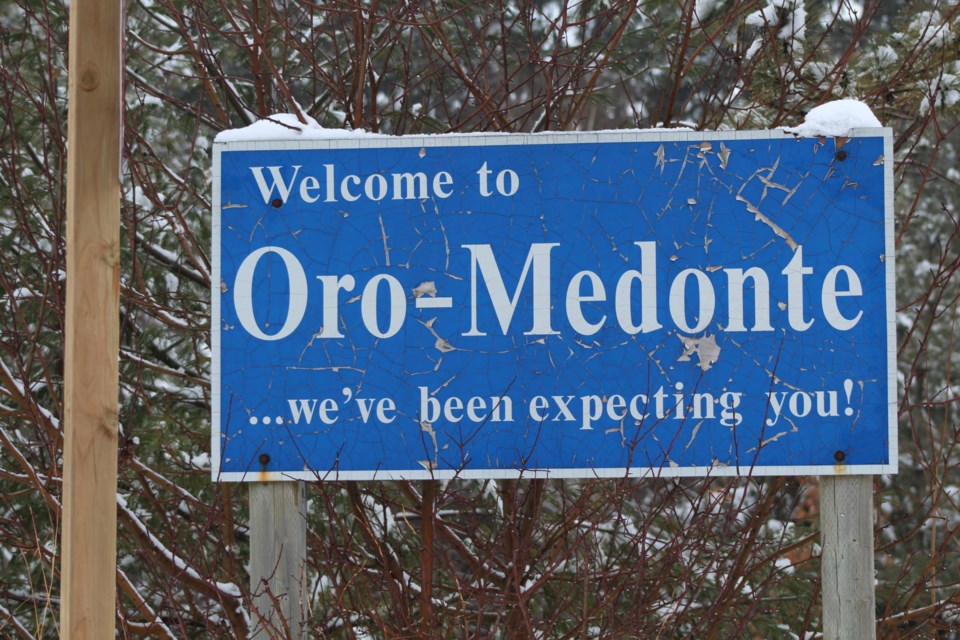Oro-Medonte Mayor Randy Greenlaw summed up his municipality's position on its negotiations regarding the City of Barrie’s boundary expansion plans in one sentence during last night's township council meeting.
“Until we actually know what is being negotiated and what that report says and we land on a ground of commonality, we will not come to a resolution and it will end up being a provincial decision,” the mayor said during a discussion on the township’s approach to the proposed next stage of the land-needs analysis and study being done by Hemson Consulting.
“Until both sides can take that stance that they understand the report identically, we’ll never have an intersection to come to an agreement," Greenlaw added.
Oro-Medonte council voted to support a staff recommendation to inform the Provincial Land Development Facilitator that Stage 3 of the land-needs analysis and study be scoped to only include a single phase as a next step to determine the following before considering further phases:
- Develop revised, long-term forecasts to 2051 for population, households, housing by type, employment and employment by type for the participating municipalities to 2051, as well as detailed forecasts for any land being considered in the boundary adjustment – (From Hemson's Stage 3 recommended work plan), including:
a) Verify the amount of currently designated, developable employment land by type (ie. manufacturing versus commercial) available in the City of Barrie is sufficient to 2051 since the definition of 'employment land' changed in the new Provincial Planning Statement, 2024;
b) Determine if the population targets in Barrie’s official plan (OP) are reasonable given the land available within the City of Barrie boundary and the density provisions in place (ie. Barrie planned density versus typical suburban density);
c) Undertake a market-demand assessment and review of empirical growth rates to inform the establishment of three growth scenarios and considerations/implications to the Barrie census area;
d) Calculate the developable land available in Barrie versus total land needs (ie. the 40 per cent non-development factor).

The township’s response is far short of the preliminary scope of work proposal for Stage 3 that Hemson rolled out Dec. 17 to the participating municipalities, the City of Barrie, Oro-Medonte Township, Springwater Township and the County of Simcoe.
According to that proposal, Stage 3 would involve the following phases:
- Phase 1 – Finalize the Stage 3 scope of work, establish up to three growth scenarios for testing within the study area and develop municipal and sub-municipal growth forecasts for each scenario.
- Phase 2 – Conduct a technical analysis of each scenario, including assessments of engineering service costs and mapping of environmentally constrained areas. Those findings will be summarized in detailed memo.
- Phase 3 – Prepare and deliver a comprehensive report of the findings and recommendations.
- Phase 4 – Facilitate consultation sessions with the participating municipalities (staff and council) as well as external stakeholders, including Indigenous groups, public agencies and the general public.
According to Greenlaw, the Stage 2 report is being interpreted differently by the parties involved and that’s creating challenges.
“One thing I think that is important that we understand is what Hemson’s report said,” Greenlaw said. “I read the report and it was quite clear that Barrie has enough land to get it to 2051. Our neighbouring municipality (Barrie) stated something very different in the media in regards to what the report said and it backed their position and the need.
“I think we need to understand, in bullet form on one page from the facilitator, what does the report actually say and we need to clearly understand what Barrie’s real needs are,” he added.
According to Shawn Binns, Oro-Medonte’s chief administrative officer, township staff believe it’s premature to move to Stage 3, given the number of questions and clarifications that still need to come out of the Stage 2 report.
“The original proposal to Oro-Medonte from the City of Barrie was for employment lands,” Binns said. “Stage 2 findings from the Hemson report concluded that Barrie did not need additional employment lands to meet its projections to 2051.
“Moreover, its short-term need could not be satisfied with the lands in Oro-Medonte due to servicing, transportation and environmental constraints," the CAO added.
Binns said there was also a need to clarify the terms that are being used, because they have changed.
Community area land, he noted, under new definitions, does include local employment uses in the new Provincial Planning Statement, which amends the definition of 'employment land' to more narrowly scope what would typically be viewed as institutional (manufacturing, warehousing and the movement of goods).
“So things like retail and office uses aren’t included in that new definition,” he said.
Binns said much of the Hemson report was based on assumptions around growth and a review of Barrie’s OP.
He said Barrie’s population targets outlined in its OP do not appear "reasonable," given the density of development occurring in its built-up areas and greenfield areas.
“The City of Barrie pledged in 2023 to facilitate the construction of 23,000 housing units by 2031, which equates to just under 3,000 units in each of the eight years,” Binns said. “In reviewing a recent report from the City of Barrie that was published at the end of 2024, just under 3,500 dwelling units were started between Jan. 1, 2023 and Dec. 31, 2024, which represents almost a 40 per cent shortfall of just over 2,300 units over that two-year period.”
Binns also noted that Hemson addressed the situation in its report.
“Achieving this target would far exceed any single year’s peak housing start during Barrie’s growth surge in the late 1990s and early 2000s,” the report stated, "and would be four times the recent annual average of 600 units per year between 2006 and 2021.”
Binns also said that even if Barrie was to acquire additional land for development outside its boundaries, it would be "unrealistic" to assume that land could be brought to market and developed prior to 2031 to meet that commitment.
